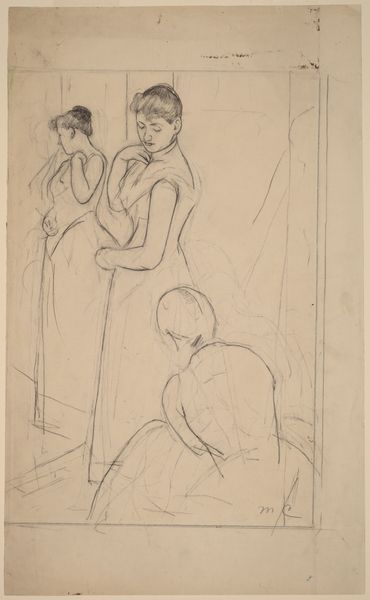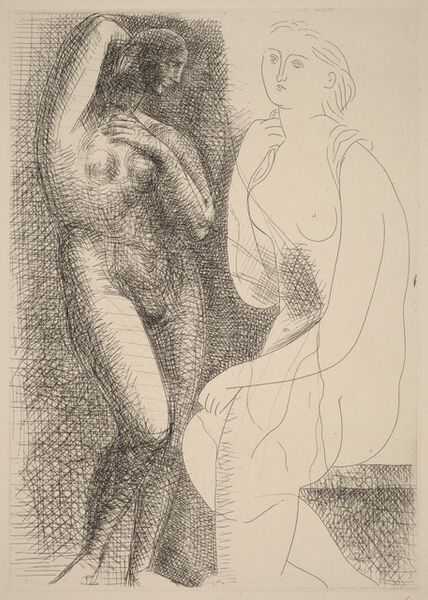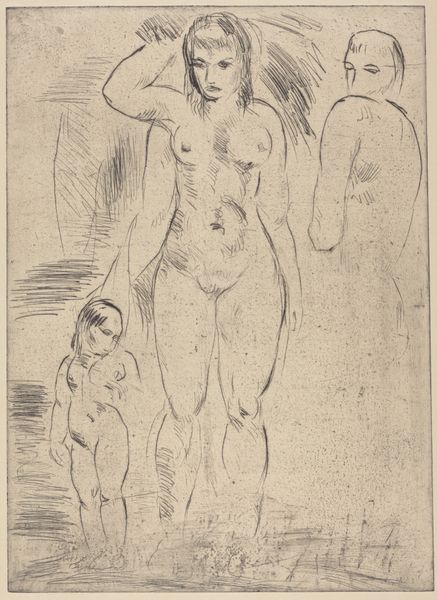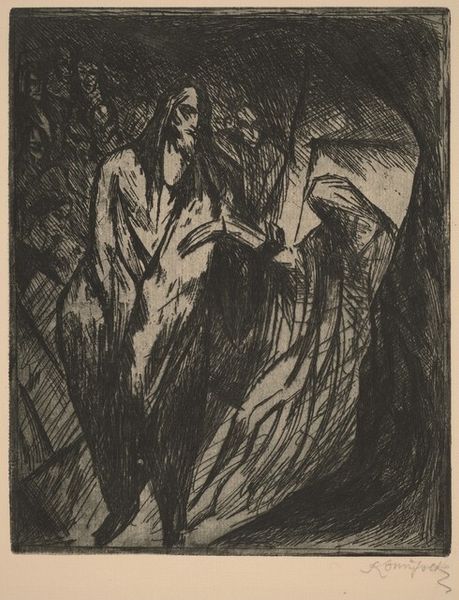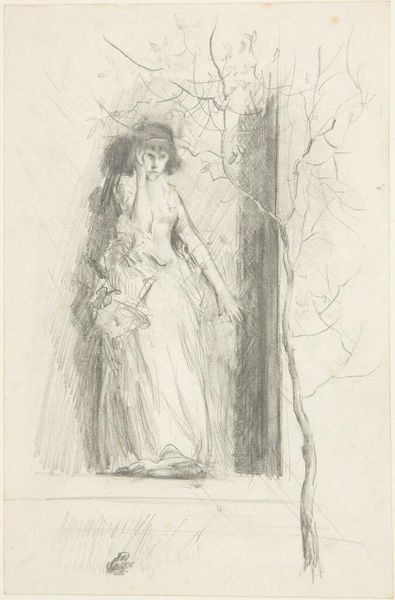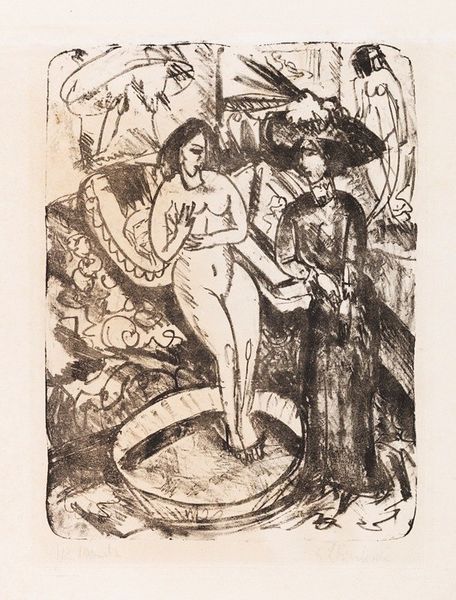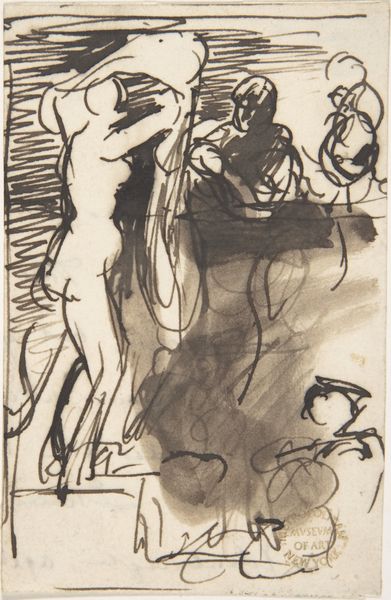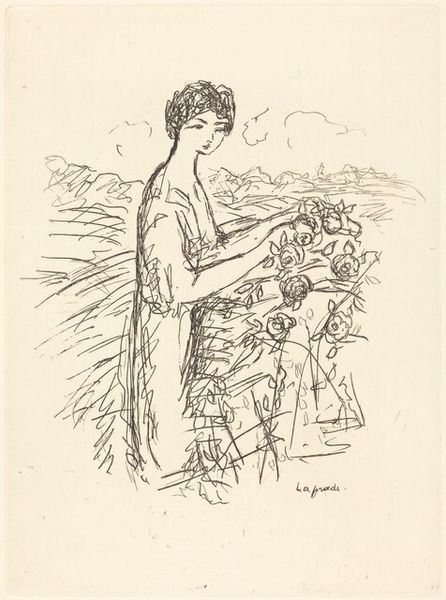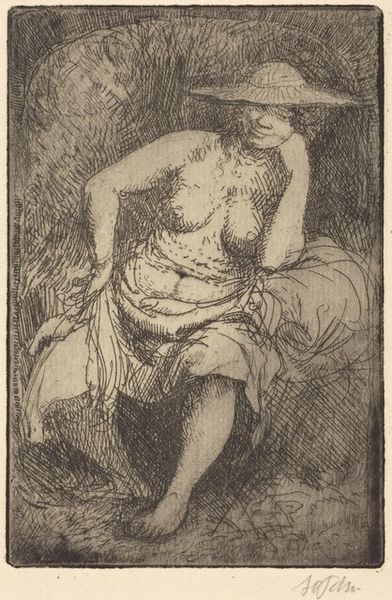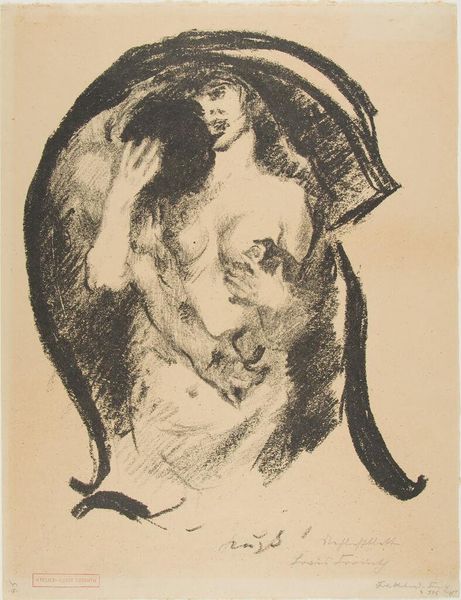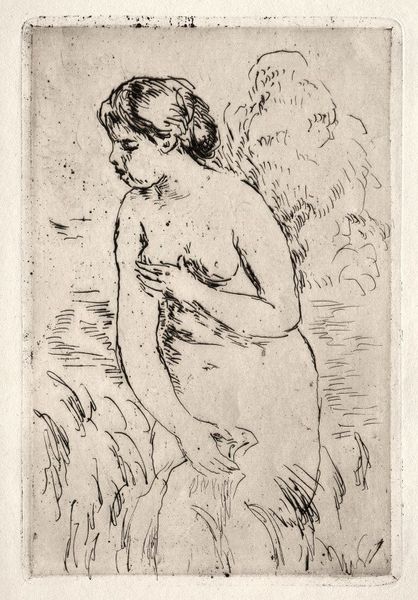
print, etching
#
portrait
#
cubism
#
ink drawing
# print
#
etching
#
figuration
#
nude
Copyright: National Gallery of Art: CC0 1.0
Curator: Here we have Pablo Picasso's 1934 etching, "Rembrandt and Two Women". It's a fantastic example of his cubist approach to portraiture and the nude form. Editor: Immediately, the delicate line work stands out. The etching seems both classical and strikingly modern, a fascinating contradiction. Curator: Etching as a medium involves a direct physical engagement. Picasso applied acid to a metal plate, manipulating the materials to create those fine lines. This industrial process results in multiple prints, connecting the art to mass production. How do you see that within the context of 1930s art and industry? Editor: It speaks to Picasso's dialogue with art history, appropriating the grand master Rembrandt, alongside two nude female figures. I immediately question who holds power in the context of the male gaze, within the traditional, gendered lens of art historical practice? Curator: Interesting point. There is a lot to unpack about those nude female figures and how they have been consumed historically in artistic circles. Note that the varied density and directionality of etched lines generate volume and texture. We could examine what tools, solvents, and acid strength Picasso specifically deployed to yield that grainy quality of shadow around the seated figure. Editor: Definitely. I wonder too if the fractured space within the composition represents fractured identities. Is Picasso addressing the multiple facets of female identity under the duress of modernity? This piece may hold clues. Curator: Looking closer at the technique allows one to engage the tools and methods used to generate a powerful emotional register. Editor: Exactly! Viewing this piece sparks conversations about labor, materials, and power. It prompts an interesting examination of the social role of art, doesn't it?
Comments
No comments
Be the first to comment and join the conversation on the ultimate creative platform.
